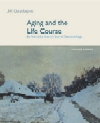1. What is social gerontology, and how is it related to the broader
field of gerontology?
Gerontology is the study of the biological, psychological, and social aspects
of aging. Social gerontology is a subfield of gerontology that focuses on the
social as opposed to the physical or biological aspects of aging. 2. How is old age defined, and what difference does the definition
make?
There is no single agreed upon way to define aging and old age. The most commonly
used definition in the United States is chronological age, but there are many
other ways to determine when someone is considered old. These include taking
on a social role such as widow or retiree, functional age, or subjective age
identity. The definition that is most useful depends on the purpose. For example,
chronological age is often used for defining eligibility for a benefit, such
as Social Security, but functional age may be a more useful way to determine
who is best suited to perform certain activities. 3. What is a cohort, and why are social gerontologists interested in
cohorts?
A cohort is a group of individuals who have experienced the same event in the
same time period. The most common way to define cohorts is by year of birth.
Cohorts are shaped by historical events, by their size and composition, and
by changes that occur in the social institutions around them. Age changes occur
in individuals over time while age differences are ways one cohort differs from
another. The concept of a cohort is useful for distinguishing age changes from
age differences. 4. What is the life course framework, and how is it useful to gerontologists?
The life course framework is an approach to the study of aging that focuses
on the interaction between historical events, personal decisions, individual
opportunities, and later life outcomes. It combines a concern with individual
aging with an awareness of changing age structures. The two core concepts of
life course research are transitions and trajectories. 5. What research methods do social gerontologists use, and what are
the advantages and disadvantages of different methods?
In cross-sectional research comparisons are made between people of different
age cohorts at one point in time. Cross-sectional studies are useful for examining
age differences in attitudes and behaviors, but they cannot measure age changes.
Longitudinal research, which follows the same individuals over time, is better
suited for distinguishing between age, period, and cohort effects. Research
on aging may be either quantitative or qualitative. Quantitative research relies
primarily on survey data. Qualitative studies draw upon field research, in-depth
interviews, and oral histories. Quantitative research is most useful for identifying
large-scale trends whereas qualitative research provides insights into social
processes and individual experiences. 6. What is ageism, and how is it perpetuated?
Ageism is defined as stereotyping and discrimination against people on the basis
of age. Stereotypes are a composite of attitudes and beliefs about people as
a group. When people act on the basis of these beliefs, they are guilty of age
discrimination. Ageism can take many forms. The form ageism takes differs by
gender, because there is a double standard concerning aging, whereby men are
valued by their accomplishments and women by their appearance. Because of this
double standard, women are more likely than men to attempt to conceal their
age. |



 2002 McGraw-Hill Higher Education
2002 McGraw-Hill Higher Education